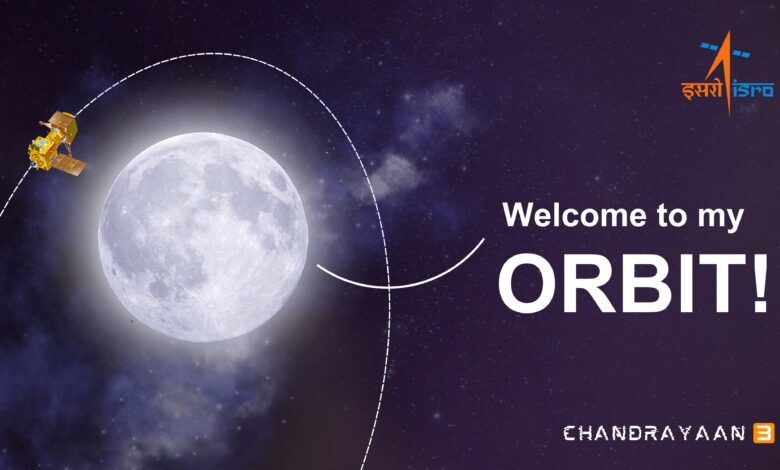Chandrayaan-3 Successfully Enters Lunar Orbit, Next Maneuver Scheduled
India's Lunar Mission Demonstrates Progress in Space Exploration

August 05, 2023 – In a significant milestone for India’s space program, the Lunar Orbit Insertion (LOI) maneuver of Chandrayaan-3 was accomplished successfully today. The spacecraft has been effectively placed into a lunar orbit, marking a crucial step towards achieving the mission’s objectives.
The Indian Space Research Organisation (ISRO) reported that the next Lunar bound orbit maneuver is scheduled for tomorrow, August 06, 2023, around 23:00 hrs IST, as the mission continues its journey towards the Moon.
Continuous monitoring of the spacecraft’s health is being conducted from the Mission Operations Complex (MOX) at ISRO Telemetry, Tracking, and Command Network (ISTRAC) in Bengaluru, ensuring all systems of Chandrayaan-3 remain in excellent condition.
Chandrayaan-3 is designed as a follow-on mission to Chandrayaan-2 and aims to demonstrate end-to-end capabilities for safe landing and roving on the lunar surface. The mission comprises a Lander and Rover configuration, set to be launched by LVM3 from SDSC SHAR, Sriharikota. The propulsion module carrying the lander and rover configuration will accompany the spacecraft to a 100 km lunar orbit. This module also houses the Spectro-polarimetry of Habitable Planet Earth (SHAPE) payload, aimed at studying Earth’s spectral and polarimetric measurements from the lunar orbit.
The Lander payloads include Chandra’s Surface Thermophysical Experiment (ChaSTE) for thermal conductivity and temperature measurements, the Instrument for Lunar Seismic Activity (ILSA) to study seismicity around the landing site, and the Langmuir Probe (LP) to estimate plasma density variations. Additionally, a passive Laser Retroreflector Array from NASA is onboard to facilitate lunar laser ranging studies.
The Rover payloads consist of the Alpha Particle X-ray Spectrometer (APXS) and Laser-Induced Breakdown Spectroscope (LIBS) to analyze the elemental composition near the landing site.
Chandrayaan-3’s primary objectives are to demonstrate safe and soft landing on the lunar surface, conduct rover roving on the Moon, and carry out in-situ scientific experiments. To achieve these goals, the spacecraft is equipped with advanced technologies, including altimeters, velocimeters, inertial measurement systems, propulsion systems, navigation, guidance, and control (NGC) mechanisms, hazard detection, avoidance systems, and a landing leg mechanism.
Various rigorous Lander special tests have been conducted successfully on Earth, including integrated cold and hot tests, as well as Lander leg mechanism performance tests on a lunar simulant test bed simulating different touch-down conditions.
Chandrayaan-3 represents a significant leap in India’s space exploration capabilities and highlights the country’s commitment to furthering scientific knowledge in the realm of interplanetary missions. With the successful LOI maneuver and upcoming Lunar bound orbit maneuver, the nation eagerly anticipates the invaluable data and insights this mission will bring about the Moon and beyond.




